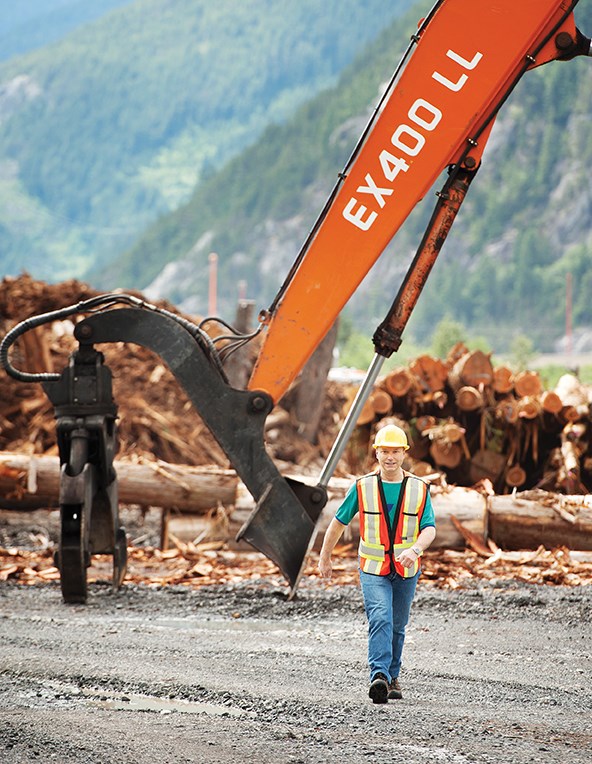The forest industry is looking at new ways to turn its ‘trash’ into ‘treasure,’ and provide solutions to some issues unique to Squamish at the same time.
Once a significant pollutant, the industry is using new technologies to convert its wood waste, or biomass— including wood shavings, sawdust, offcuts, wood chips, tree bark, and pellets — into biofuel, a form of renewable energy.
The two main forms of this energy are biogas and biochar, meant to replace natural gas and charcoal, respectively. This more environmentally-friendly bioenergy is something forestry consultant Eric Andersen hopes other industries will consider adopting as a way to reduce their greenhouse gas emissions.
“If we think of renewables, we typically think of wind and solar. But by far the world’s most renewable energy source is biomass,” said Andersen. “We can displace oil and natural gas with bioenergy.”
Made primarily of methane and carbon dioxide, biogas is created by anaerobic digestion, a biochemical process where microorganisms digest organic materials and produce the gas as a result. That gas can replace natural gas, which can be put into a pipeline or captured and shipped by truck.
Biochar is created through pyrolysis, which involves heating wood at high temperatures in oxygen-deprived conditions. It can be used by the cement industry, or in agriculture as a soil ingredient to help retain water and overall quality, for example.
Converting wood waste into bioenergy could solve multiple problems for Squamish at once; not only would it create potentially low-cost and renewable energy sources, it would also free up valuable space in the landfill.
“In Squamish, we are running out of land. We need to use land very efficiently,” said Andersen. “We need to stop wasting land with landfills, and maybe we can also regain some land by remediating it if we can process that wood waste that’s buried in the ground.”
Andersen estimates the four log sorts along Squamish’s waterfront create between 30,000 to 40,000 cubic metres of wood waste a year. But the more the forestry industry finds a demand for its bioenergy, the less waste from land clearing, log sorts, and sawmills, and from construction and demolition projects, will be buried in the ground.
“We have been burying wood waste at various places around Squamish for 50 years, and it’s not an optimal practice,” he said, adding that buried wood waste can leech methane gas. “If we can convert the wood waste to energy, we have the potential to remediate some of our old landfills.”
For example, the area near the airport, where the old sawmill was burying wood waste in the 1980s and 1990s, could be remediated.
The biomass could be removed, mixed with fresh dry demolition waste, and processed as biofuel, said Andersen.
“Today that’s very valuable land for, say, manufacturing, or future industry, future jobs, so that is one reason why all of Squamish is a stakeholder in this,” he said.
It’s something the industry has already proven can be done successfully.
Ten years ago, a remediation project removed wood waste from the site of the old sawmill where the Waterfront Landing residential subdivision is to be built. That waste was blended with fresh wood material to improve its quality and sent to the Port Mellon’s Howe Sound Pulp and Paper to be used in the boiler that powers the mill.
Looking ahead, the industry is still trying to find new ways to repurpose its wood waste, because time, and space, is running out.
“We only have a limited time to find solutions,” Andersen said. “The landfills are getting used up, so we are really forced to find a solution within the next few years.”




